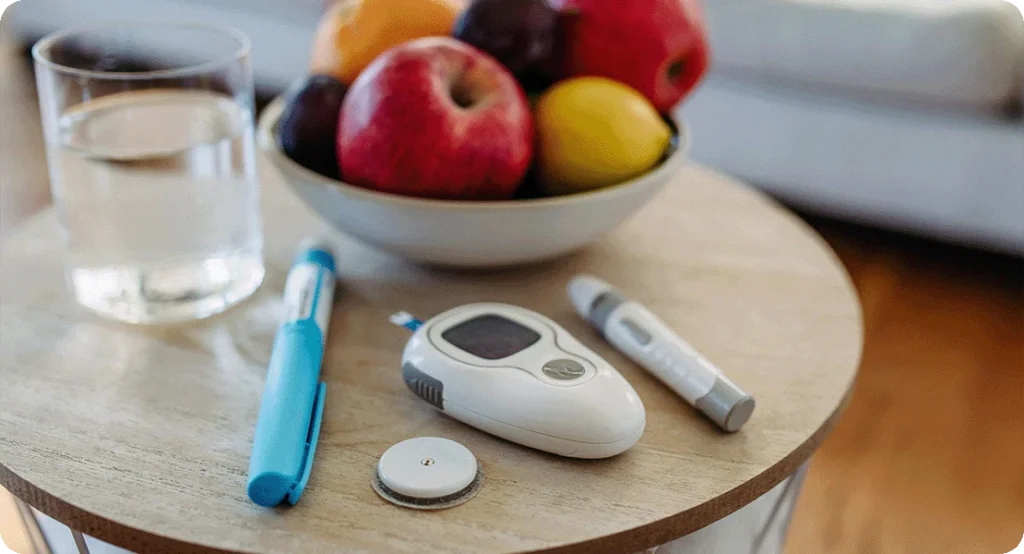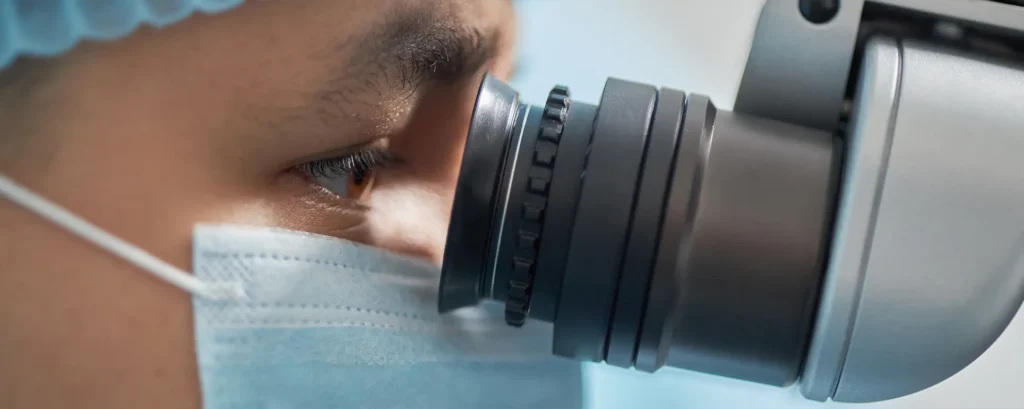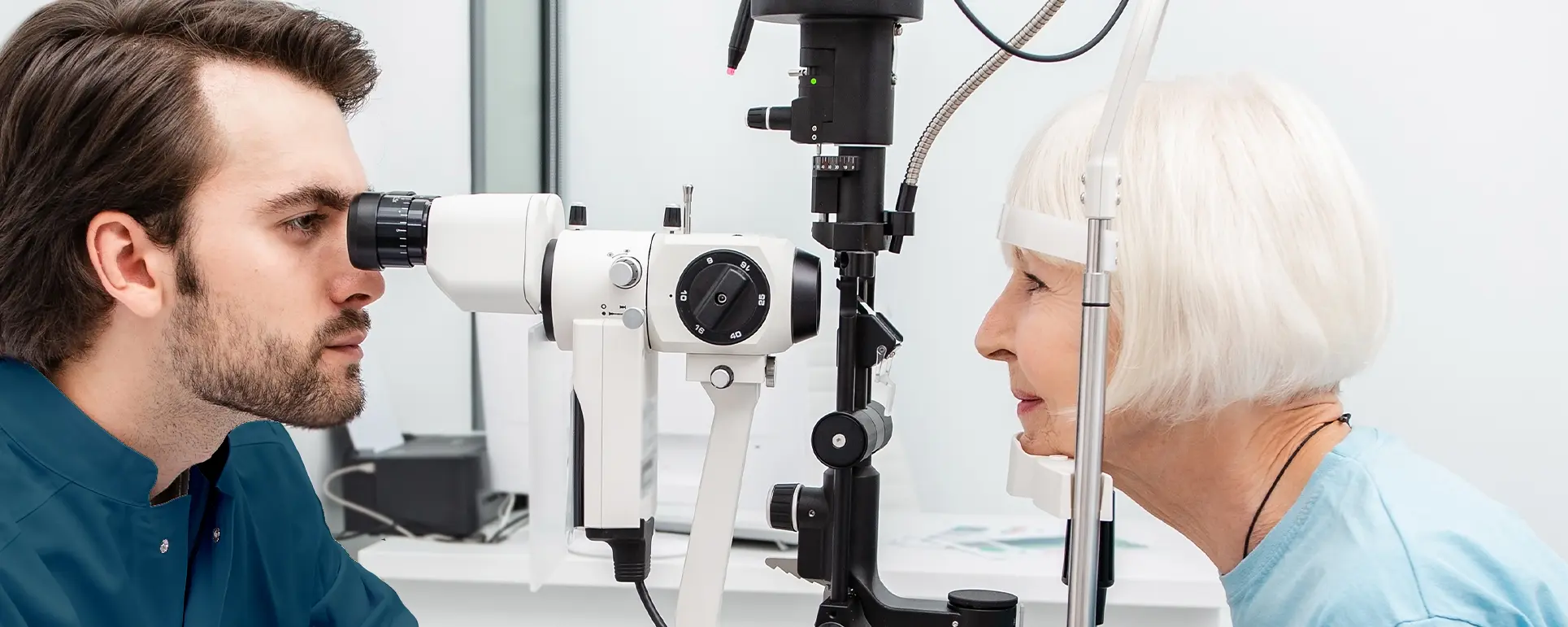If you’re living with diabetes, you probably already know how much it can affect different parts of your body over time. One of the more frustrating complications is diabetic neuropathy—the nerve damage that develops when high blood sugar disrupts how nerves send signals. It doesn’t just cause tingling in the feet or hands; it can also affect the eyes, eyelids, and even how your body responds to surgery.
Now, if you’ve also been told you have cataracts, you might feel like you’ve got two challenges stacked against you. Cataracts cloud the eye’s natural lens, blurring vision until surgery becomes the only real fix. For most people, cataract surgery is straightforward and has an excellent recovery track record. But when you add diabetic neuropathy into the mix, there are some important differences in how your care plan is shaped—from the type of anaesthesia your surgeon chooses, to the way you’ll use eye drops after the operation, and even the strategies for keeping your eyes comfortable while healing.
In this article, I’ll walk you through exactly how diabetic neuropathy changes cataract surgery care, so you can be better prepared and have the right conversations with your eye care team.
Understanding Diabetic Neuropathy in the Context of Eye Health

Diabetic neuropathy occurs when persistently high blood sugar damages the delicate nerve fibres throughout your body. Most people think of it in terms of foot ulcers or numbness in the hands, but in fact, the eyes are also highly dependent on nerve health. Nerves control eyelid movement, blinking, tear production, and corneal sensitivity. When those nerves are affected, you might not blink as often, or you may not feel small scratches on your eye surface as clearly as someone without neuropathy.
This reduced sensitivity matters because the cornea—the clear front layer of your eye—is essentially the “windshield” that needs to stay smooth and healthy for clear vision. If neuropathy reduces corneal sensation, it’s easier for the eye to dry out or get irritated after surgery. It also means that damage or infection might not feel as painful at first, which could delay treatment if you’re not careful.
In short, diabetic neuropathy doesn’t just affect how comfortable you feel during surgery; it also influences how well your eyes heal afterwards. That’s why your care plan needs to be customised to take these changes into account.
Why Cataract Surgery Matters So Much in Diabetes
Diabetes itself raises the risk of developing cataracts earlier in life. High blood sugar changes the structure of proteins in the lens, making it cloudy more quickly than in people without diabetes. So, while cataracts are common in ageing generally, those with diabetes often face them in their 50s or even 40s, rather than waiting until their 70s.
On top of that, cataracts in people with diabetes can progress more rapidly. You might notice your prescription glasses stop helping sooner than expected, or that glare and halos around lights become particularly bothersome. Once the cataract reaches a certain stage, surgery isn’t optional—it’s the only way to restore clear vision.
But unlike someone without diabetes, you’ll need to consider more than just the cataract itself. Your blood sugar control, the condition of your retina, and—if neuropathy is part of the picture—your eye’s ability to respond to healing signals, all shape how your surgery is planned.
How Neuropathy Influences Anaesthetic Decisions
One of the most immediate concerns in cataract surgery is the choice of anaesthesia. Many cataract procedures are done with local anaesthetic eye drops or an injection around the eye, rather than general anaesthesia. But if neuropathy has reduced your ability to blink properly, or if it has affected the muscles controlling the eyelids, your surgeon may want to adjust the plan.
For example, some patients with severe neuropathy have difficulty keeping the eye steady during surgery because the natural reflexes that usually help stabilise the eye are weakened. In such cases, anaesthetists may choose a stronger local block to prevent unwanted movements.
At the same time, if neuropathy has caused widespread autonomic nerve damage—the kind that influences heart rate and blood pressure—general anaesthesia can sometimes carry extra risks. This doesn’t mean you can’t have surgery, but it does mean your anaesthetist will carefully assess which option is safest and most comfortable for you.
Eye Drop Use: Why Neuropathy Can Complicate Things

After cataract surgery, eye drops are a standard part of recovery. You’ll normally be prescribed a combination of antibiotic, anti-inflammatory, and sometimes lubricating drops to prevent infection and reduce swelling.
If you have neuropathy, however, a few problems can arise:
- Application difficulties – If neuropathy has affected your hand coordination, squeezing a drop bottle accurately into your eye can be harder.
- Reduced sensation – You might not feel dryness or irritation as strongly, so you could underestimate how much your eye needs lubrication.
- Eyelid function – If your eyelid movement is weakened, drops may not spread evenly across the eye surface.
Because of this, your care team might recommend extra lubricating drops or gels, longer use of anti-inflammatory drops, or even punctal plugs (tiny inserts that help keep tears on the eye longer). You may also benefit from a family member or carer helping to apply your drops if manual dexterity is an issue.
Postoperative Comfort Strategies for Neuropathy Patients
One of the hidden challenges of diabetic neuropathy is that discomfort doesn’t always feel “normal.” Some people with neuropathy experience exaggerated pain responses, while others feel very little even if something is wrong. That’s why your surgeon will usually err on the side of caution, scheduling closer follow-ups and giving you specific comfort strategies.
You may be advised to use preservative-free lubricating drops more frequently than someone without neuropathy, because dryness can be harder to detect. You may also be encouraged to use warm compresses to improve eyelid function if blinking has weakened.
Importantly, your team will probably emphasise the importance of not ignoring even subtle changes in your vision—such as new floaters, flashes of light, or unexpected blurring—because you may not feel the discomfort that would usually alert someone to a problem.
Healing and Infection Risk
Another change in your care plan relates to how your body heals after cataract surgery. Diabetic neuropathy doesn’t just affect nerves—it often develops alongside other complications like reduced blood flow and weaker immune responses. This means wounds may heal more slowly, and the risk of infection can be slightly higher.
To manage this, your surgeon may prescribe a longer course of antibiotic drops or schedule extra follow-up appointments to check for early signs of infection. They might also be more cautious about removing stitches (if any are used), giving your eye extra time to repair itself.
Coordination Between Eye Specialists and Diabetes Care Teams

One of the best ways to ensure safe and smooth cataract surgery when you have diabetic neuropathy is close communication between your ophthalmologist, anaesthetist, and diabetes specialist. Blood sugar management before, during, and after surgery is crucial, and nerve damage makes this coordination even more important.
If you’re already under the care of an endocrinologist or diabetes nurse, they may recommend tighter glucose monitoring in the weeks before surgery. Keeping your blood sugar stable can make a big difference in how well the eye heals and how comfortable the recovery feels.
Lifestyle Preparations Before Surgery
If you know you have diabetic neuropathy and are preparing for cataract surgery, there are a few practical steps you can take:
- Check your blood sugar control – Good glucose management reduces the risk of complications.
- Arrange help for eye drops – If your hands aren’t steady, plan for someone to help with application.
- Keep your eyelids healthy – Use warm compresses or lid-cleaning wipes if you have meibomian gland dysfunction, as this reduces dryness after surgery.
- Stock up on lubricants – Having preservative-free artificial tears ready at home can make a big difference in comfort.
These small steps make the surgical journey less stressful and improve recovery outcomes.
Looking Ahead: Long-Term Eye Health with Neuropathy
Cataract surgery itself may only take about 20 minutes, but its effects on your vision are long-lasting. If you also have diabetic neuropathy, the key is to remember that your care plan doesn’t stop once the bandage comes off. Long-term follow-up is essential—not just to monitor the artificial lens, but also to check that neuropathy isn’t creating new risks for corneal health or dry eye problems.
By staying proactive, attending every scheduled appointment, and never ignoring changes in vision, you can protect the results of your surgery for years to come.
Frequently Asked Questions
1. Does diabetic neuropathy make cataract surgery riskier?
Diabetic neuropathy does increase certain risks when it comes to cataract surgery, but it doesn’t make the procedure unsafe. The main issues are slower healing, a higher chance of eye surface problems, and a slightly greater infection risk. Because the nerves in the cornea and eyelids may not work properly, your eyes might not feel pain or dryness in the same way as someone without neuropathy, which can delay recognising problems. This is why your surgeon will usually recommend closer follow-up and more careful aftercare. With a tailored plan in place, outcomes are still very successful, and many people with neuropathy enjoy the same improvement in vision as other patients.
2. Will I need a different type of anaesthetic if I have neuropathy?
Not always, but in some cases, your anaesthetist may recommend adjustments. Cataract surgery is often done with local anaesthetic eye drops or injections, which are usually safe even if you have nerve damage. However, if your eyelid muscles don’t close properly or your eye doesn’t stay steady, a stronger local block may be needed to keep things comfortable and stable. In rare cases, patients with widespread autonomic neuropathy may need additional monitoring if sedation or general anaesthesia is being considered. The important point is that your anaesthetic plan will be personalised to keep you safe and at ease.
3. Can neuropathy affect how I use eye drops after surgery?
Yes, it can. Eye drops are a vital part of recovery, but neuropathy can cause problems with either applying them or spreading them across the surface of the eye. If your hand coordination is affected, it may be harder to squeeze the bottle accurately, and if your eyelids don’t blink properly, the drop might not spread evenly. This can reduce the protective effect of the medication. In these cases, your care team might suggest using thicker lubricating gels, preservative-free drops, or even arrange for someone to help administer them. The goal is to make sure your eyes are protected and healing as they should.
4. Do people with neuropathy heal more slowly after cataract surgery?
It’s quite common for people with neuropathy to experience slower recovery after surgery. This isn’t just because of the nerve damage itself, but also because neuropathy often develops alongside circulation problems and reduced immune response. Together, these factors can mean that small wounds or stitches take longer to close, and inflammation may last longer than in people without diabetes. Your surgeon will usually respond by keeping you on anti-inflammatory or antibiotic drops for a longer period and by arranging extra follow-up appointments to check that healing is on track.
5. What should I do if I don’t feel pain but my eye looks red after surgery?
If you notice redness but don’t feel discomfort, you should still treat it as a warning sign. Neuropathy can blunt your normal pain signals, meaning you might not feel irritation or infection in the same way as others. Redness, discharge, or even subtle changes in your vision can be the only clues that something isn’t right. It’s best to call your surgeon immediately and get checked rather than wait and see. Acting quickly helps avoid more serious complications and protects the long-term results of your cataract surgery.
6. Could neuropathy affect my vision directly, separate from cataracts?
Yes, it can. Cataracts cloud the lens, but neuropathy can also affect the cornea and eyelids, which play a big role in clear vision. For example, if your corneal nerves are damaged, you may not blink often enough to keep the eye moist, leading to dry spots that blur your sight. Similarly, if your eyelid muscles are weak, the tear film may not spread evenly across your eye. These changes don’t damage the lens implant itself but can still interfere with sharp, comfortable vision. That’s why dry eye management and regular check-ups are especially important after surgery.
7. Do I need to prepare differently for cataract surgery if I have neuropathy?
A little extra preparation definitely helps. First, work with your diabetes team to keep your blood sugar as stable as possible, because this lowers the risk of infections and speeds up healing. Second, think about your eye drop plan in advance—if you know you struggle with dexterity, arrange for someone to help. Third, keep your eyelids and eye surface healthy before surgery by using warm compresses or lid wipes if you have blepharitis. These small steps can make recovery smoother and help your surgeon deliver the best results.
8. Will neuropathy make my recovery more uncomfortable?
Interestingly, it can go either way. Some people with neuropathy feel less discomfort than expected because their nerves don’t signal pain properly, while others experience unusual or heightened sensations such as burning or tingling that can make recovery feel tougher. This variability is why your care plan will emphasise comfort strategies, such as using lubricating drops regularly and avoiding environments that dry out the eyes. If you find discomfort is more noticeable, let your surgeon know, as adjustments can usually be made to ease the healing process.
9. Can cataract surgery itself make neuropathy worse?
No, cataract surgery doesn’t worsen neuropathy, since nerve damage is caused by long-term high blood sugar rather than surgery itself. That said, the stress of surgery can temporarily affect blood sugar levels, and poor glucose control can aggravate nerve health in general. This is why surgeons and diabetes specialists often encourage tighter blood sugar monitoring around the time of your operation. By keeping things stable, you reduce the chance of complications and protect both your nerves and your eyes in the longer term.
10. How often should I see my eye doctor after cataract surgery if I have neuropathy?
You’ll usually be advised to come in more often than someone without neuropathy. A typical schedule might include a check within the first week, another after a month, and then additional visits if any concerns arise. Your surgeon may also suggest longer-term monitoring of your corneal health and tear film, since neuropathy increases the risk of dry eye and surface changes. These extra visits are not just a precaution—they give your team a chance to spot and treat small issues before they become bigger problems, helping to keep your vision clear and comfortable.
Final Thoughts
Cataract surgery is one of the most successful medical procedures, but diabetic neuropathy adds layers of complexity that can’t be ignored. From anaesthetic planning to eye drop routines and long-term healing, your care plan will be tailored to address nerve-related challenges.
If you’re preparing for surgery and have neuropathy, the most important step you can take is to communicate openly with your care team and never downplay even small changes in your vision. With the right preparation and support, you can look forward to clear sight and a comfortable recovery.
If you’d like expert guidance that takes your diabetes and neuropathy into account, you can book a consultation with our team. We’ll work with you to design a care plan that’s personalised to your needs and ensures the best possible outcome.
References
- American Diabetes Association (2023) Standards of Medical Care in Diabetes—2023. Diabetes Care, 46(Supplement_1), pp. S1–S154. Available at: https://diabetesjournals.org/care/issue/46/Supplement_1 (Accessed: 29 August 2025).
- O’Donnell, C. and Efron, N. (2019) ‘Diabetes and the ocular surface: A review’, Clinical and Experimental Optometry, 102(5), pp. 416–424. Available at: https://onlinelibrary.wiley.com/doi/full/10.1111/cxo.12865 (Accessed: 29 August 2025).
- Singh, R., Ramasamy, K., Abraham, C. and Gupta, V. (2018) ‘Diabetic neuropathy and ocular complications: Clinical perspectives’, Indian Journal of Ophthalmology, 66(11), pp. 1716–1725. Available at: https://www.ncbi.nlm.nih.gov/pmc/articles/PMC6293702/ (Accessed: 29 August 2025).
- Gupta, P., Zhao, D., Guallar, E. and Friedman, D.S. (2016) ‘Diabetes and risk of cataract surgery: A meta-analysis’, Diabetes Care, 39(9), pp. 1675–1682. Available at: https://diabetesjournals.org/care/article/39/9/1675/36524/Diabetes-and-Risk-of-Cataract-Surgery-A-Meta (Accessed: 29 August 2025).
- Kuo, I.C. (2017) ‘Cataract surgery in patients with diabetes: Special considerations’, Current Opinion in Ophthalmology, 28(1), pp. 1–5. Available at: https://journals.lww.com/co-ophthalmology/Fulltext/2017/01000/Cataract_surgery_in_patients_with_diabetes__Special.6.aspx (Accessed: 29 August 2025).

